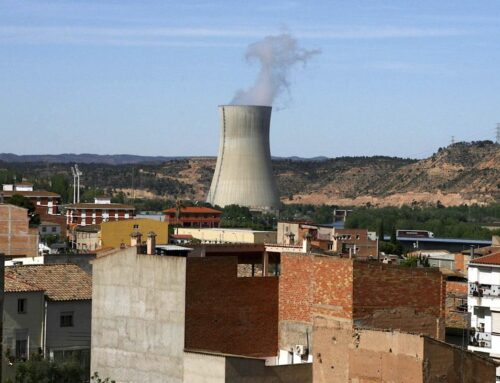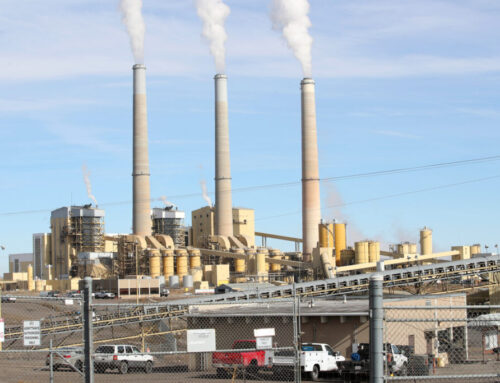The Rise of Energy Storage in the Clean Energy Market
January 4, 2025
Energy storage is heating up to be “clean energy’s next trillion-dollar business.” Keeping energy grids stable and reliable throughout the global clean energy transition will require a massive expansion of energy storage capacities as well as research and development into novel ways of storing energy that can contend with the massive influx of variable energy that the future of global energy security is supposed to depend on.
Wind and solar energy are critical to the global decarbonization movement but pose some key challenges for energy security in terms of steady supply and steady pricing. Solar and wind are variable energy sources, which means that their production levels fluctuate according to external and uncontrollable factors including the weather, time of day, and the seasons. Plus, some people have solar panels on their houses, making them both energy producers and consumers with a two-way flow to grids which were built with only one direction of flow in mind. And then there’s the runaway growth in electric vehicle markets, which will also present a whole new source of stress for electric grids.
The inevitable mismatch of variable energy production and consumer demand places a significant strain on electric grids designed for a steady and easily manipulated supply of fossil fuels and has created complex issues in global energy markets. In some places where renewables already make up a significant part of the energy mix, energy prices can even dip below zero. “This lowers the potential for spot market earnings for producers and highlights the need for complementary investments in flexibility and storage capacity,” the International Energy Agency reports.
But while energy storage is a relatively elementary concept, its execution is anything but simple. The vast number of variables facing modern electricity grids, from EVs to residential solar to mass-scale variable energies, requires a wide range of plural storage solutions. “Energy storage systems can range from fast responsive options for near real-time and daily management of the networks to longer duration options for the unpredictable week-to-week variations and more predictable seasonal variations in supply and demand,” Smart Energy International reports. What’s more, they range from incredible complex systems relying on futuristic innovations such as green hydrogen schemes to straightforward and low-tech approaches involving pulleys, weight, and gravity.
Some of today’s most promising forms of energy storage include:
-
Batteries
Most energy storage today runs on lithium-ion batteries. These batteries are ubiquitous and useful, but have relatively short-term storage capacities and rely on lithium, which comes with its own slew of geopolitical and environmental issues. Researchers are currently hard at work discovering other forms of batteries to replace some of lithium-ion batteries’ market share, including this proton battery.
-
Thermal
“Thermal storage in essence involves the capture and release of heat or cold in a solid, liquid or air and potentially involving changes of state of the storage medium, e.g. from gas to liquid or solid to liquid and vice versa,” writes Smart Energy International. Deployment of thermal energy storage could be relatively rapid and simple, as it depends on abundant and accessible resources such as salt, air, and bricks, all of which are excellent at retaining heat.
-
Mechanical storage
Mechanical energy storage deals in kinetic energy, and typically involves mechanics such as flywheels and compressed air systems. Gravity storage is becoming an increasingly popular form of mechanical storage as well. This could include anything from using excess energy to lift and then lower massive concrete blocks, to gathering the excess energy a vehicle generates when travelling downhill to help power it back up the hill. These storage solutions are valuable due to their simplicity, and could potentially be scaled with relatively low start-up costs compared to other storage options.
-
Pumped hydro
Pumped hydro is a long-term energy storage solution in which water is pumped uphill using excess energy at peak production times and then released downhill to spin turbines to create electricity when energy is later needed. This often relies on dams, and is therefore a relatively controversial form of energy storage. “Depending on who you ask, pumped hydro energy storage is either the future of the clean energy industry and the key to decarbonizing the global economy, or it’s an ecological disaster that needs to be stopped,” Oilprice reported last year.
-
Hydrogen
Hydrogen offers a potential energy storage solution because it can be compressed and stored for long periods of time, and later used to generate electricity when needed. “The hydrogen would be compressed and stored underground in salt caverns or depleted gas fields, and the following winter would be converted nonstop to electricity, using fuel cells,” reports PV Magazine. In the short term, hydrogen storage could be complemented with other forms of energy storage. “Daily balancing would be achieved using batteries and pumped hydro. To the extent the entire grid ran on renewables in the summer, the hydrogen would be ‘green,’ or renewably produced.”
By Haley Zaremba for Oilprice.com
More Top Reads From Oilprice.com
- A Look at the Geopolitical Landscape Heading into 2025
- CNOOC Launches Joint Development Project in South China Sea
- Exxon and Chevron Expand Global Hiring Push
Search
RECENT PRESS RELEASES
Related Post




